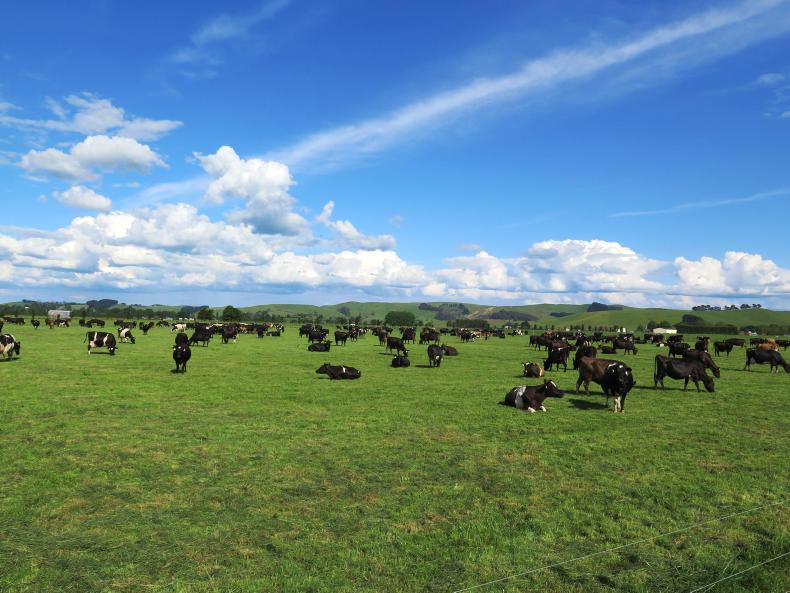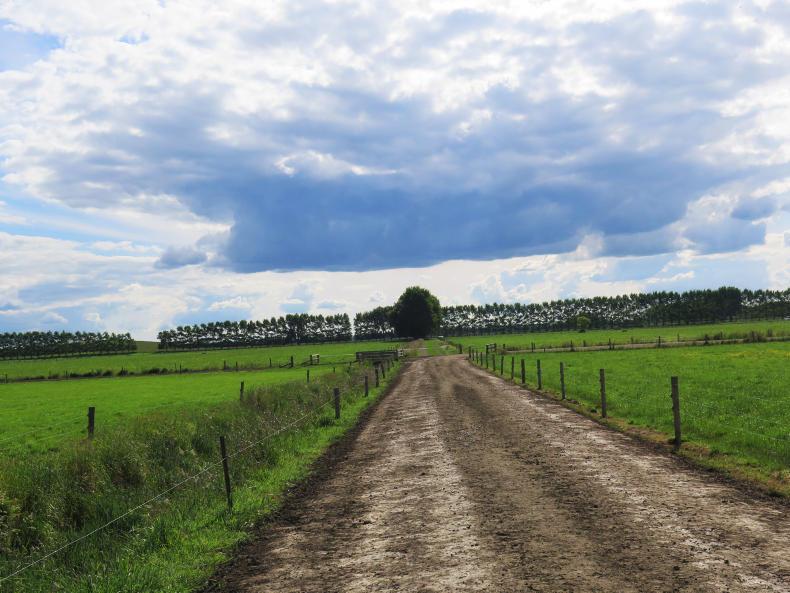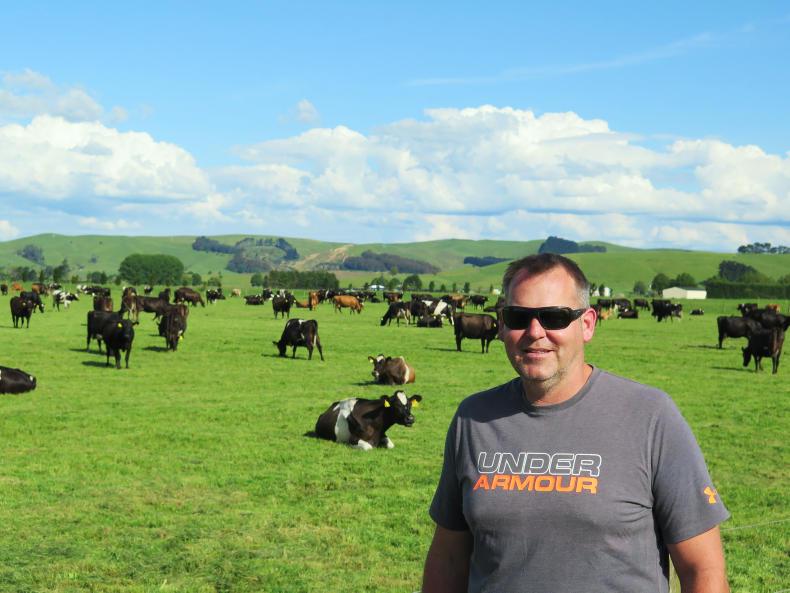The Waikato region in New Zealand was and still is the traditional heartland of dairy farming in New Zealand. A bit like the Golden Vale or west Cork in Ireland, the whole economy was built on and is structured around dairy farming.
Farm sizes here are smaller than in most other parts of New Zealand and land prices are generally higher at NZ$60,000 to $80,000/ha (€36,000 to €48,000/ha) for a fully developed farm, less the stock.
Even within the Waikato region there are differences in land values. The area surrounding the regional capital of Hamilton is the heart of it all. Land prices are most expensive here. The town of Morrinsville is 20 minutes from Hamilton and is surrounded by the best land in New Zealand.
Farming family
Martyn Sing bought a 79ha farm near Morrinsville in 1979. Today, the Sing family is farming 380ha and milking 1,050 cows as well as being involved in a large equity partnership in the South Island. The Sing farm is one of the largest in the area.
Today, the farm is operated by Martyn’s son Mark, who worked off-farm for years before returning to the family business 14 years ago.
The Sing farm has grown from the original 79ha block by buying neighbouring farms. This progress was made during times when capital was scarce and interest rates were high.
The farm doubled in size in 1992, when the block next door was purchased. Martyn says that the following few years were tough going but they got through it.
Contract-milking
Another neighbouring farm was purchased in 2004, at the same time as Mark was returning home, so he contract-milked on this farm.
A new 50-bail rotary parlour was built around this time and the whole farm was operated as one unit. However, a new 24-unit herringbone was built on this farm four years ago.
There are now 220 cows milked on the smaller farm and 830 cows milked on the larger farm. Mark is the owner operator on the smaller farm and is a lower-order share-milker on the larger farm.

One of the 400-cow herds in the large farm.
A farm manager runs the smaller farm while Mark runs the larger farm along with two herd managers. Mark’s parents Martyn and Maree still own the larger farm, including the cows and are still very involved in the overall business.
Effectively, they have employed Mark to look after the large farm by employing him as a lower-order share-milker.
Agreement
The Sing agreement is that Mark gets 25% of the milk cheque in exchange for looking after 100% of the labour and parlour running costs along with 25% of most other costs.
He could have opted to become a contract-milker like Jamie Haultain but Martyn and Maree feel that share-milking is a more equitable agreement as the share-milker gets to enjoy the high milk price too, being on a percentage of the milk cheque.
Standards on the farm are exceptionally high. The farm looks great from the road.
“It’s important to have the place looking well. It’s no different to a shop front in the town. If it looks good it’ll be more attractive to people to work here or do business with us,” Martyn says.
The Sings attended the Pasture Summit in Hamilton and when they came home they decided to rethink their supplementation policy.

The Sings invest in farm roadway maintenance every year. The road surface is excellent.
Feed
Over the course of the year the cows are fed about 500kg of maize silage, 400kg of Palm Kernel, 200kg of grass silage and they graze swedes during the summer dry. Most of the cows are wintered on the farm but 100 cows go to a run off for the winter. The Sings spread about 150kgN/ha/year.
The smaller herd is fed meal in the parlour. The larger herd is fed supplement in a feed pad. This is a long double row of feed bunkers. Palm kernel is fed through an auger bucket on the front of the tractor. Maize and grass silage is fed out on the bunker through a feed trailer.
It’s important to have the place looking well. It’s no different to a shop front in the town
At the moment, the cows in the big herd are being fed 2kg of palm kernel per day, and this is fed out on the feed pad before the evening milking.
The farm has got loads of rain over the last two weeks so Mark was ringing the contractor to come and mow some bale silage.
Mark hopes to achieve a 7 to 8% empty rate with the cows after 10 weeks of breeding. Like a lot of farmers in New Zealand, he uses CIDRs to get cows in-calf. Any cow not seen cycling and less than six years old and in the right condition score will get a CIDR 10 days before the start of breeding. Nine per cent of the cows got CIDR’s before the start of breeing this year.
Tractors
The farm has three medium-sized John Deere tractors with loaders. Slurry from the collecting yards and feed pads is collected in lagoons and spread using self-travelling irrigators. Contractors do all cropping and silage harvesting. Fertiliser, feeding out and pre-mowing/topping is all done in-house.
Mark says the average number of hours worked per cow is 9.6 man hours per cow per year.
The 40-year-old says that his share-milking job helps to pay back the debt that he has from buying the smaller, 220-cow farm off his parents.
Read more
New Zealand: meet contract milker Jamie Haultain
Dairying challenges highlighted at Pasture Summit
The Waikato region in New Zealand was and still is the traditional heartland of dairy farming in New Zealand. A bit like the Golden Vale or west Cork in Ireland, the whole economy was built on and is structured around dairy farming.
Farm sizes here are smaller than in most other parts of New Zealand and land prices are generally higher at NZ$60,000 to $80,000/ha (€36,000 to €48,000/ha) for a fully developed farm, less the stock.
Even within the Waikato region there are differences in land values. The area surrounding the regional capital of Hamilton is the heart of it all. Land prices are most expensive here. The town of Morrinsville is 20 minutes from Hamilton and is surrounded by the best land in New Zealand.
Farming family
Martyn Sing bought a 79ha farm near Morrinsville in 1979. Today, the Sing family is farming 380ha and milking 1,050 cows as well as being involved in a large equity partnership in the South Island. The Sing farm is one of the largest in the area.
Today, the farm is operated by Martyn’s son Mark, who worked off-farm for years before returning to the family business 14 years ago.
The Sing farm has grown from the original 79ha block by buying neighbouring farms. This progress was made during times when capital was scarce and interest rates were high.
The farm doubled in size in 1992, when the block next door was purchased. Martyn says that the following few years were tough going but they got through it.
Contract-milking
Another neighbouring farm was purchased in 2004, at the same time as Mark was returning home, so he contract-milked on this farm.
A new 50-bail rotary parlour was built around this time and the whole farm was operated as one unit. However, a new 24-unit herringbone was built on this farm four years ago.
There are now 220 cows milked on the smaller farm and 830 cows milked on the larger farm. Mark is the owner operator on the smaller farm and is a lower-order share-milker on the larger farm.

One of the 400-cow herds in the large farm.
A farm manager runs the smaller farm while Mark runs the larger farm along with two herd managers. Mark’s parents Martyn and Maree still own the larger farm, including the cows and are still very involved in the overall business.
Effectively, they have employed Mark to look after the large farm by employing him as a lower-order share-milker.
Agreement
The Sing agreement is that Mark gets 25% of the milk cheque in exchange for looking after 100% of the labour and parlour running costs along with 25% of most other costs.
He could have opted to become a contract-milker like Jamie Haultain but Martyn and Maree feel that share-milking is a more equitable agreement as the share-milker gets to enjoy the high milk price too, being on a percentage of the milk cheque.
Standards on the farm are exceptionally high. The farm looks great from the road.
“It’s important to have the place looking well. It’s no different to a shop front in the town. If it looks good it’ll be more attractive to people to work here or do business with us,” Martyn says.
The Sings attended the Pasture Summit in Hamilton and when they came home they decided to rethink their supplementation policy.

The Sings invest in farm roadway maintenance every year. The road surface is excellent.
Feed
Over the course of the year the cows are fed about 500kg of maize silage, 400kg of Palm Kernel, 200kg of grass silage and they graze swedes during the summer dry. Most of the cows are wintered on the farm but 100 cows go to a run off for the winter. The Sings spread about 150kgN/ha/year.
The smaller herd is fed meal in the parlour. The larger herd is fed supplement in a feed pad. This is a long double row of feed bunkers. Palm kernel is fed through an auger bucket on the front of the tractor. Maize and grass silage is fed out on the bunker through a feed trailer.
It’s important to have the place looking well. It’s no different to a shop front in the town
At the moment, the cows in the big herd are being fed 2kg of palm kernel per day, and this is fed out on the feed pad before the evening milking.
The farm has got loads of rain over the last two weeks so Mark was ringing the contractor to come and mow some bale silage.
Mark hopes to achieve a 7 to 8% empty rate with the cows after 10 weeks of breeding. Like a lot of farmers in New Zealand, he uses CIDRs to get cows in-calf. Any cow not seen cycling and less than six years old and in the right condition score will get a CIDR 10 days before the start of breeding. Nine per cent of the cows got CIDR’s before the start of breeing this year.
Tractors
The farm has three medium-sized John Deere tractors with loaders. Slurry from the collecting yards and feed pads is collected in lagoons and spread using self-travelling irrigators. Contractors do all cropping and silage harvesting. Fertiliser, feeding out and pre-mowing/topping is all done in-house.
Mark says the average number of hours worked per cow is 9.6 man hours per cow per year.
The 40-year-old says that his share-milking job helps to pay back the debt that he has from buying the smaller, 220-cow farm off his parents.
Read more
New Zealand: meet contract milker Jamie Haultain
Dairying challenges highlighted at Pasture Summit








 This is a subscriber-only article
This is a subscriber-only article











SHARING OPTIONS: